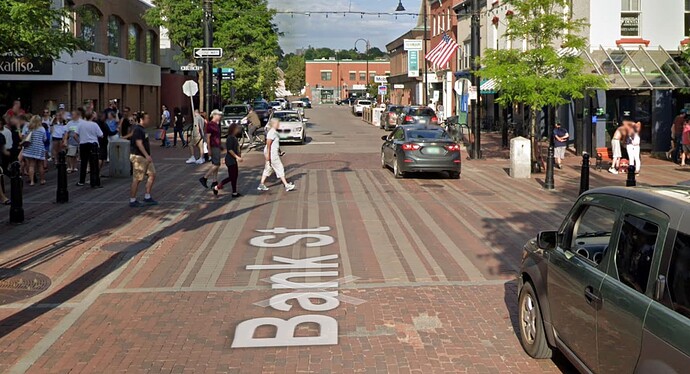I’d be interested to hear what folks think about this location in my town where a pedestrian street intersects with a vehicle street. Pedestrians have priority and vehicles must stop for them. People routinely walk straight across with very little regard to the presence of vehicles.
The vibe on the ground is certainly that the vehicle street crosses the pedestrian street because of the surface material difference, but really both streets cross each other. There is not grade difference between the streets. There is a highway=crossing node here, but no way tagged as a crossing. If there was one, footway=crossing wouldn’t be right since the street is a highway=pedestrian. I guess pedestrian=crossing has a little bit of use. I have mapped the surface change from asphalt to brick on the cross street: Way: Bank Street (1131464701) | OpenStreetMap. If there were a “vehicular street crosses pedestrian way” tagging scheme, this would be a perfect place to use it. It certainly wouldn’t be called a continuous sidewalk though. ![]()
